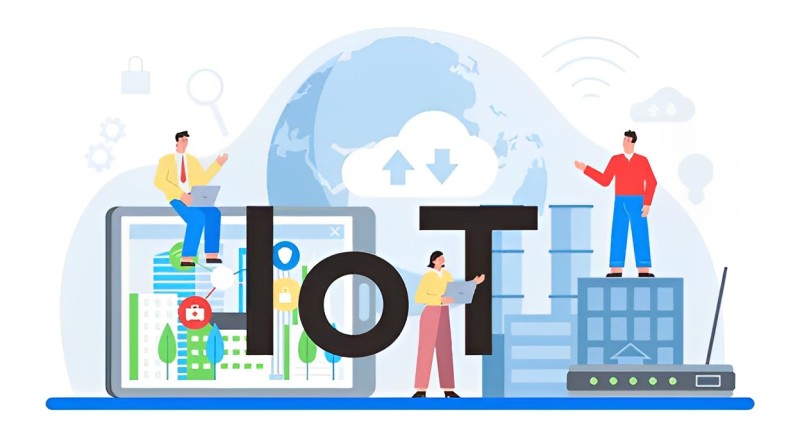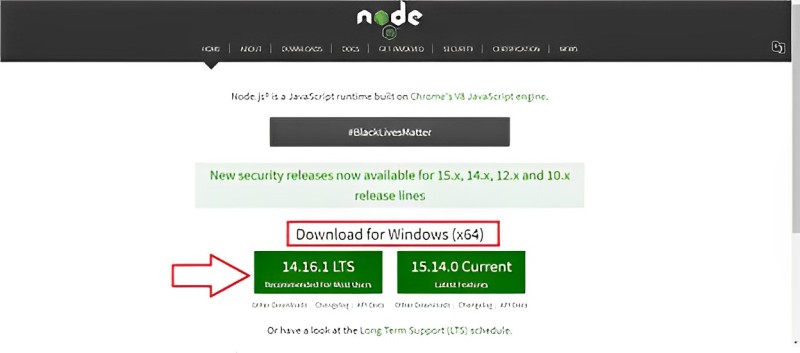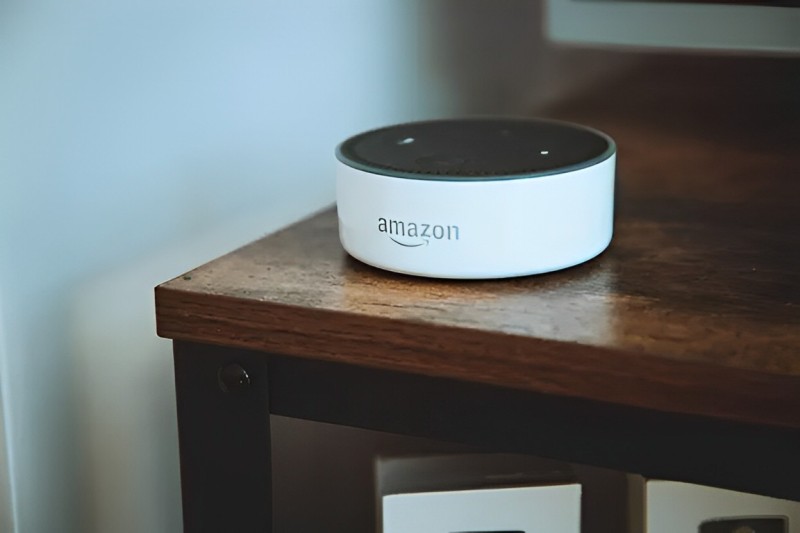Introduction
Have you ever considered how great it would be to operate electronics or appliances in your home with only your voice? Imagine saying “lights on” and the smart bulbs turn on, or asking your robot assistant to play music without touching any buttons.
This kind of natural, conversational interaction is becoming possible using voice recognition and Node.js!
Node.js provides the ideal framework for integrating voice control into networked edge devices. Its asynchronous event architecture is perfect for handling voice input and responses.
This guide walks step-by-step through how to build custom voice-controlled IoT devices with Node.js and voice assistant SDKs. Follow along to learn how voice control opens new possibilities for innovative IoT projects.

Step-by-Step Guide to Creating Voice-Controlled IoT Devices with Node.js
Step 1 – Set up the IoT Hardware Device
First, we need to assemble the physical Internet of Things device that we’ll be voice-enabling using Node.js. This includes the core computing board, peripherals like microphone and speaker, electronic components, and power sources.
For prototyping, a Raspberry Pi board provides a readily available IoT infrastructure out of the box. Solder any necessary circuits between components.
Connect peripherals like a USB microphone and headphones or an integrated speaker module. Attach power sources like batteries or AC adapters.
Ensure the device has WiFi connectivity through built-in wireless or a USB dongle. This provides internet access for connecting to voice assistant cloud platforms.
Install and configure the target OS platform like Raspbian on the Raspberry Pi.
With the OS ready, connect components to GPIO pins on the board.
For example, attach the microphone pins to audio in channels. Configure the OS to use the mic as the default audio source. Verify full functionality of hardware components before moving up the software stack.
Thoroughly testing the physical build avoids issues like loose wires or powered-off components that prevent software integration. Careful prototyping saves debugging time further along.
Step 2 – Install and Configure Node.js

With prototype hardware prepped, install Node.js on the IoT device. Node provides the backend environment for running JavaScript needed to interface with voice assistant SDKs.
Use the default package manager like apt for Debian/Ubuntu to install Node.js packages on Linux-based devices.
Verify installation succeeded and Node.js commands like ‘node’ and ‘npm’ are globally available on the path.
Initialize a new Node.js project directory structure using ‘npm init’.
This scaffolds package manifests defining dependencies and scripts. Install any necessary peripheral control libraries from NPM to integrate hardware like mics.
Create a Node.js server file like ‘app.js’ that will run continuously on boot and handle core voice capabilities.
Require any libraries at the top. Optionally, containerize the Node.js server app using Docker for simplified deployment and portability.
Configuring Node.js establishes the foundation to run JavaScript needed for integrating with speech recognition platforms.
Carefully installing dependencies avoids tricky debugging of voice app behavior further along.
Step 3 – Interface with a Voice Assistant SDK
With Node.js set up, it’s time to interface our IoT hardware with a voice assistant platform.
Top options include Amazon Alexa SDK, Actions on Google client library, and Azure Cognitive Services Speech SDK.
Install the chosen voice assistant SDK using Node’s package manager NPM. Follow all onboarding steps like obtaining API keys and linking accounts.
Refer to the documentation to initialize the voice client in Node.js, passing in platform credentials for authentication.
This critical integration connects our physical device to the robust natural language processing power in the cloud.
It activates voice recognition, conversation management, and text-to-speech from the assistant platform through our Hire nodejs backend developer.
Carefully validating account connections avoids headaches when testing speech functionality. With the voice platform linked up, we’re ready for the brain of our voice software.
Step 4 – Capture and Process Voice Commands
Now we can implement the logic to capture spoken commands, send audio to the speech platform, and process the response text:
Use the mic peripheral Node module to record voice input from users. Configure sensitivity thresholds to improve accuracy.
Stream the raw audio to the speech SDK client. The platform’s deep learning models analyze the waveform to transcribe speech to text.
Process the transcript response using natural language understanding to determine user intent, identify entities, and parse key info. Use techniques like regex pattern matching or ML classifiers.
This key step transforms unstructured voice data into structured commands our code can reason about and act on. It converts speech to actionable language.
Carefully testing microphone setup, audio parameters, and speech parsing ensures reliable command handling. Voice input is often noisier in practice compared to desktop apps.
Step 5 – Execute Actions Based on Voice Input
Now we can start executing useful actions in the physical world based on analyzed voice data.
This step ties voice commands to outputs and control of devices, appliances, robots, and more.
For example, let’s say the speech recognition platform returns a transcript of “Please turn on the kitchen lights”.
Our Node.js backend code can look for keywords in this text to derive an action. Recognizing terms like “turn on” and “kitchen lights” signifies the user wants those lights activated.
We need modular, reusable Node.js functions that map specific keywords to actions.
These actions utilize Node capabilities like spawning child processes and making network requests to integrate with IoT hardware controllers.
For a lighting command, we would signal the microcontroller managing kitchen lights to toggle the LED circuit on.
The complexity and variety of actions can expand over time as voice command capabilities grow. Support controlling music playback.
Navigate robot motors based on movement commands. Integrate with third-party smart home and IoT ecosystems using their APIs. The possibilities are endless.
Smoothly linking analyzed voice command text to physical outcomes is the final link in the conversation chain. With it, users gain intuitive voice control over their environments.
Rigorously testing end-to-end functionality identifies integration issues early. Anticipating failure cases and misinterpretations improves reliability.
Step 6 – Provide Voice Feedback to Users
The last step is closing the conversational loop by providing relevant voice feedback to users after taking actions so they aren’t left guessing.
Node.js can prepare response text like “Okay, turning on the kitchen lights” after handling the command and triggering the action.
Send this text to the speech SDK to synthesize it into natural-sounding voice audio using text-to-speech services.
Consider personalizing responses based on user profiles to make interactions more human-like.
Experiment with appropriate phrasing, speaking tone/pace, and conversational markers to make the voice feedback feel smooth and natural. The goal is to avoid a disjointed, robotic-sounding exchange.
Clear voice confirmations of actions improve the intuitiveness of conversing with devices immensely. Without feedback, users are left clueless about whether their voice commands succeeded or how the system understood them. Voice is a two-way street.
Rigorously test an assortment of commands, contexts, phrasings, and responses to build robust conversational capabilities. Natural-feeling voice exchanges will make interacting with the technology more seamless and intuitive for users.
Benefits of Voice Control for IoT Devices
Enabling voice makes IoT devices more intuitive, convenient, and accessible:
- Hands-free use allows controlling devices seamlessly even when occupied
- No complex menus or controls are needed – just natural speech
- Enables easy personalization with per-user voice recognition
- Voice removes physical barriers for those with disabilities
- Common language avoids learning device-specific commands
- More engaging human-like interactions using dialogue
- Can integrate with digital assistants people already use like Alexa
- Allows remote control when away from the device
Voice Platform Options for IoT
Several cloud platforms exist for adding voice capabilities to IoT devices:
Amazon Alexa

Alexa Voice Service integrates with Echo and other Alexa-enabled products. Provides speech recognition, wake word detection, and APIs.
Google Assistant
Actions on Google allow building apps for Google Assistant. Offers natural language understanding and text-to-speech.
Azure Cognitive Services
Microsoft’s set of Adaptive AI Development Services includes Bots, Speech services, and Language Understanding.
Hardware Considerations for Voice-Enabled Devices
The hardware capabilities required to add voice to IoT devices include
Microphone –
To Sense natural speech, often using multiple mic arrays for noise cancellation.
Speaker –
Output synthesized speech responses, notifications, etc.
Connectivity –
WiFi or cellular connectivity to interface with cloud platforms.
Processing power –
Adequate CPU and memory to handle audio processing plus internet connectivity.
Power –
Battery capacity to support constant listening and speech interactions.
Tips for Managing Authorization and Security
Protecting sensitive IoT devices with voice capabilities requires thoughtful security measures:
- Use voice identification and biometrics to allow only recognized and authorized users to issue commands. This prevents unauthorized access.
- Validate all actions dictated by voice input against an approved allow list to prevent potentially dangerous or damaging operations. Whitelisting adds a safety net.
- Transmit all data including audio streams solely over encrypted TLS channels to prevent eavesdropping or MITM attacks. Encryption is mandatory for security.
- Physically restrict hardware access to only trusted users and networks. Set up VLAN segmentation, firewall rules, and access controls. Limit exposed ports and services.
- Actively maintain and rapidly patch software dependencies to close vulnerabilities as discovered. Use tools like npm audit to automatically flag risks.
- Store credentials securely using best practices like environment variables or secret management services rather than hardcoding. Rotate keys periodically.
- For highly sensitive scenarios, consider using a hardware security module (HSM) for storing and processing cryptographic keys and operations. This offers hardened protection.
- Rigorously pen test prototypes and production implementations of voice IoT devices using ethics and compliance best practices. Squash any findings.
Investing in defense-in-depth and continuously improving security is critical for building production voice-enabled IoT devices safely. Consider security upfront in the design process.
Challenges and Limitations to Consider
While intriguing, adding voice control to IoT also poses challenges:
- Speech recognition in noisy environments remains imperfect requiring redundancy like multiple mics. Edge recognition would require high processing power.
- Natural language understanding still has limitations in accurately interpreting commands and intents, requiring authors to restrict vocabularies.
- Streaming high-quality audio and speech requires consistent high-bandwidth internet connectivity which cannot be guaranteed for all environments.
- Battery-powered devices restrict computational abilities and always-on voice interactivity without frequent recharging.
- Security, privacy, and liability risks require extensive due diligence, especially for public/retail and health/medical uses.
- Programming conversation flows can be complex, often necessitating machine learning and iteration to deliver fluid experiences.
- Testing and troubleshooting remain time-intensive given hardware and speech layers. Automated end-to-end testing is recommended.
- Adoption requires public acceptance and trust in conversational UIs and emotional intelligence which will take time.
The Future of Voice-Enabled IoT
Voice looks to be an integral part of the future of the Internet of Things. As speech recognition and conversational AI continue rapidly advancing, more innovative applications of voice in IoT will emerge.
We are likely to see voice UIs become a primary or at least complementary control mechanism across consumer and industrial IoT devices.
Already, voice assistants like Alexa and Google Assistant are making inroads into smart homes, infotainment systems, office equipment, and more.
As edge processing improves, local on-device speech recognition may gain traction – mitigating the need for constant cloud connectivity. More capable chips specializing in audio and speech processing will enhance possibilities.
Multi-modal interactions blending touch, gestures, and vision alongside voice will create even richer interfaces. Spatial audio and 3D sound will make interactions more immersive.
Device form factors may shift like Amazon’s Echo Loop ring allowing always-available access on the go. Voice will expand beyond stationary smart speakers.
In industrial environments like warehouses and factories, voice direction could boost efficiency and safety by allowing hands-free control while leaving vision unobstructed. Voice IoT promises to transform roles across sectors.
Of course, thoughtfully addressing risks around security, privacy, accessibility, and bias will remain crucial as voice interactions become ubiquitous. But the possibilities look incredibly exciting!
We’ve just scratched the surface of the voice-controlled IoT revolution. How could Voice transform your industry, improve safety, or create new products?
What concerns should developers prioritize addressing as voice interfaces grow? We look forward to hearing your thoughts below!





